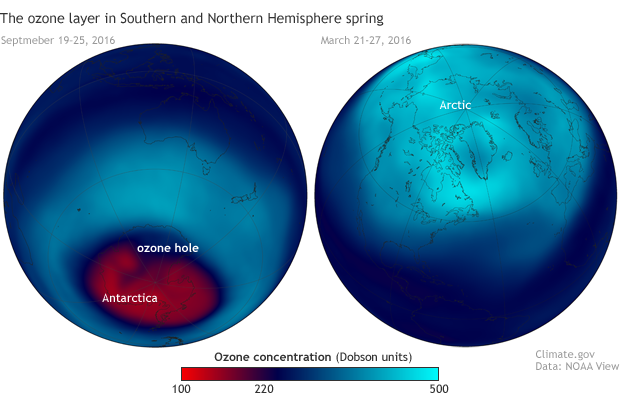Antarctica is the only place on Earth where it's reliably cold enough for an ozone hole to form
The ozone hole is an annual thin spot that forms in the stratospheric ozone layer over Antarctica in mid-September and October. When it comes to the ozone hole, chlorine is the enemy. The chlorine comes from chlorofluorocarbons (CFCs, for short), which were widely used in early refrigeration and cooling systems. Under most atmospheric conditions, when CFCs begin to degrade, the chlorine they contain first gets incorporated into variety of smaller molecules that do not directly harm the ozone layer.

No comments:
Post a Comment